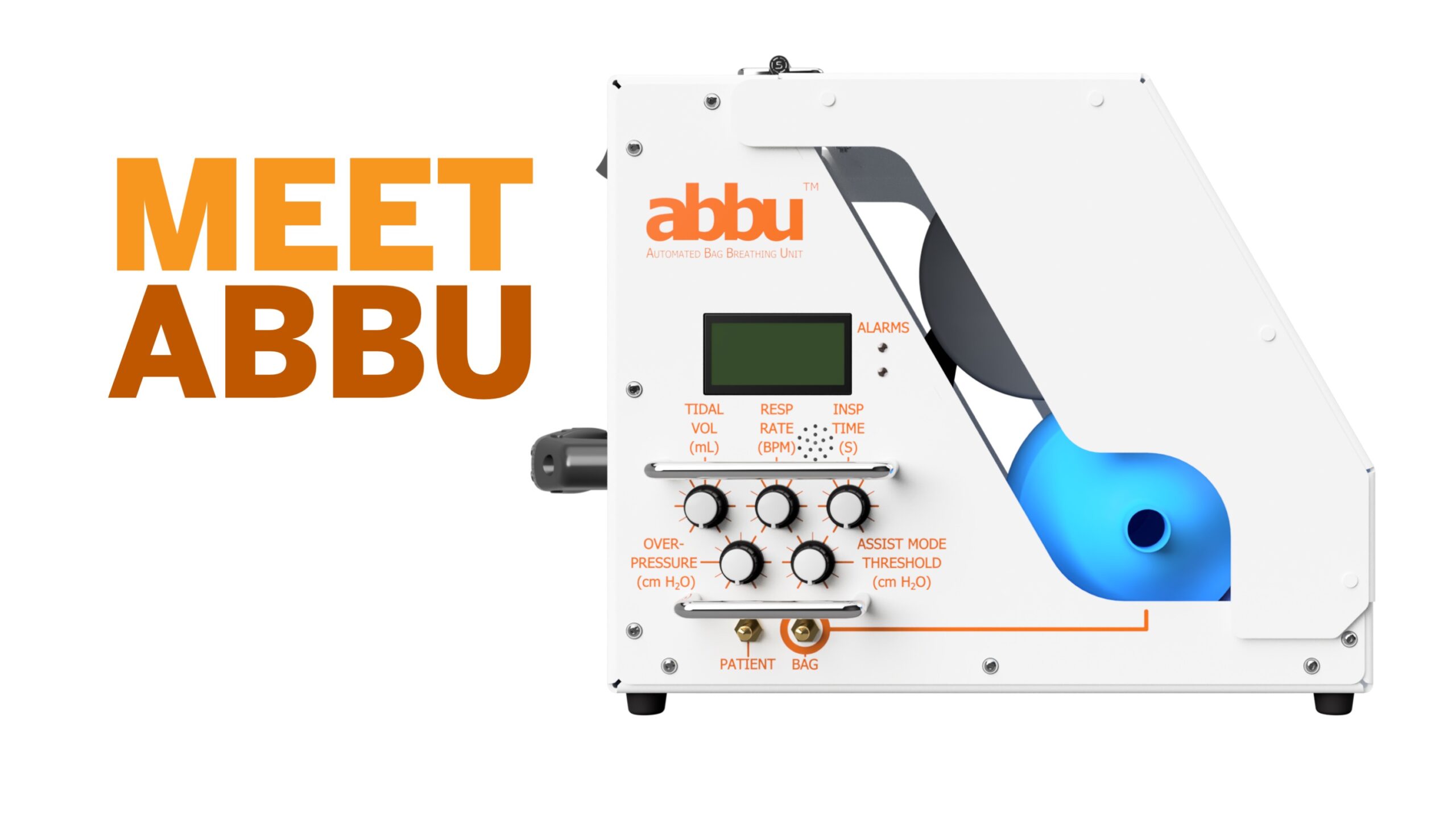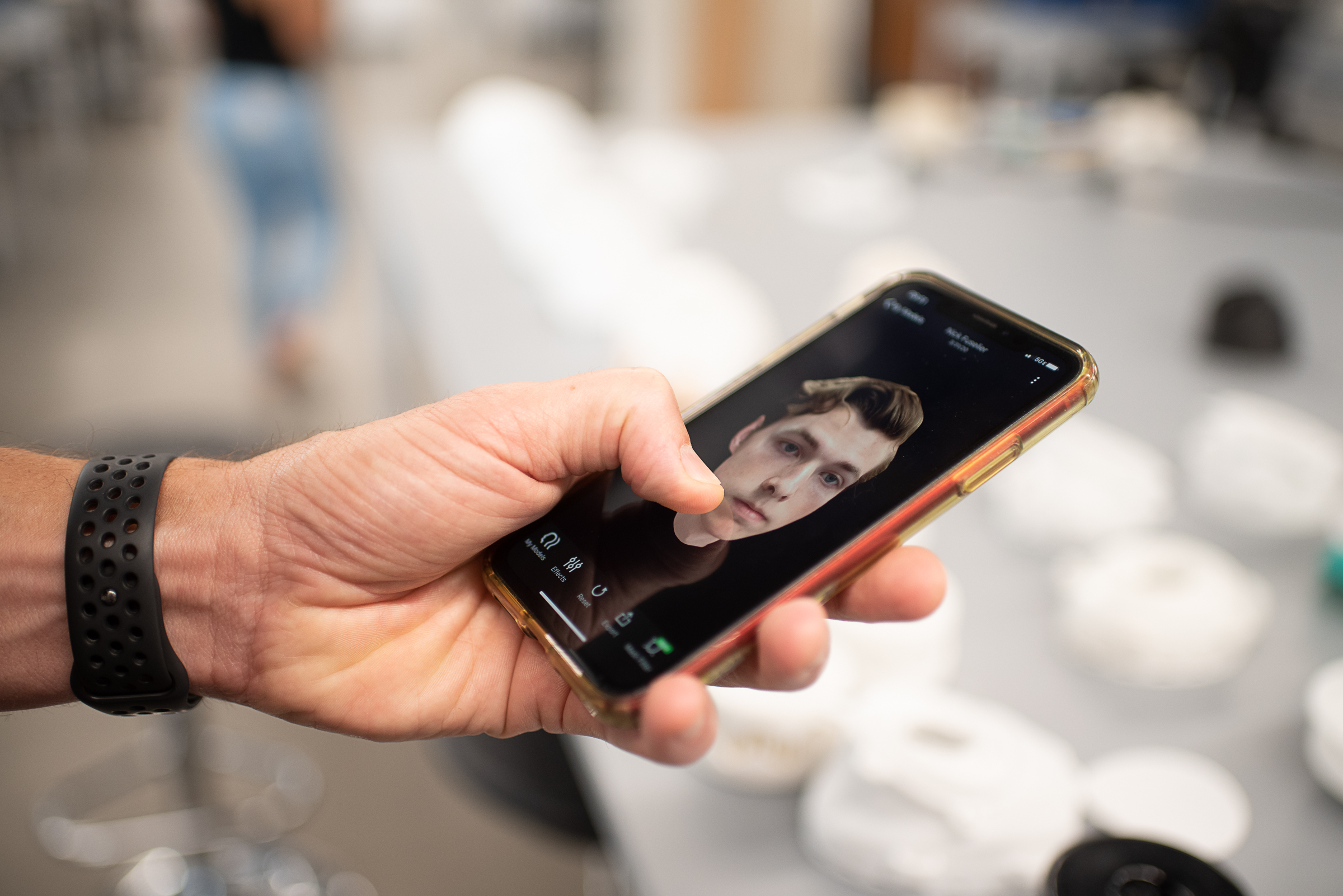In the early days of the COVID-19 pandemic in the U.S., fears of a ventilator shortage gripped the medical community and got the attention of Tom Milner.
Milner, a retired professor in the Department of Biomedical Engineering, heard about the ventilator shortage on the news like many others, and decided he needed to do something. He wanted to find a way to produce an inexpensive alternative to a ventilator — which can cost upward of $50,000, putting them out of reach for many medical providers — to help patients get the care they need, even in rural areas and other places without a significant supply.
The best way to create a low-cost device, even one that performs tasks as complex as helping people breathe, is to use readily available materials to build it. So, Milner began looking at windshield-wiper motors, which come standard in many automobiles, as the basis for his team’s new invention: an automatic version of a ventilator that uses the common medical device called an AMBU bag to pump oxygen into patients’ lungs.
“We decided we just needed to start building something and see what we could do. And it needed to come from materials that aren’t hard to find,” Milner said.
The project, a collaboration between the Cockrell School of Engineering, Dell Medical School, the Texas Innovation Center, Texas Health Catalyst and UT Health San Antonio is one of the most significant COVID-related efforts under development at The University of Texas at Austin so far. The device has been built and tested in concert with medical professionals, and it is awaiting clearance from the U.S. Food and Drug Administration.
Engineers across all disciplines in the Cockrell School are applying their expertise to the problem in any way possible. Nearly eight months since the pandemic took hold in the U.S., an ever-growing cadre of research projects have been funded and are on track to produce something to improve the quality of care and life during this COVID era.
“What we have seen from our engineering research community is truly remarkable — it’s inspiring,” said John Ekerdt, associate dean for research in the Cockrell School. “From devices to data analytics, our faculty are answering the call to save lives and develop solutions that health care workers can use now. In many ways, this response has been like a wartime effort.”
In just a matter of months, Cockrell School researchers have received funding for 11 COVID-related projects, totaling nearly $1.6 million. Another 25 projects are in early stages, and they are seeking nearly $11 million in combined funding.
Springing into Action
“When this pandemic hit, it was like standing in front of a barn fire,” said Jon Valvano, a professor in the Department of Electrical and Computer Engineering, who is one of the faculty leaders on Milner’s ventilator project. “I was just frozen in response to the fire. My first response was to run, but what would that serve?”
Researchers recalled an immediate trepidation and fear that quickly gave way to the feeling of responsibility to try and solve this problem however they could.
Most engineers get into the field because they want to find solutions to great challenges. Few events have posed the threat to modern society created by COVID. Like no other time in their careers, engineers and scientists are front and center, and they are ready to step up. For a lot of researchers that means pivoting ongoing projects to battle the pandemic.
“Truly, the excitement of being a researcher comes when we can take our ideas and expertise to different domains,” said Deji Akinwande, a professor in the Department of Electrical and Computer Engineering. “The driving force behind my research for the last decade has been finding ways I can contribute to contemporary problems like the pandemic.”
Akinwande and researcher Dmitry Kireev are developing a dual test that can simultaneously detect the flu and COVID-19. Such a distinction becomes even more important in flu season as the two maladies include similar symptoms. The researchers pivoted an existing biosensor project started last year to focus on COVID-19. The team members received a grant for the project earlier this year and are now working with a company to develop a dual testing product.
Akinwande isn’t the only engineering faculty member to repurpose an existing project to focus on COVID testing. Yuebing Zheng, an associate professor in the Walker Department of Mechanical Engineering is adapting a drug analysis platform to create a new type of COVID test that can detect very low levels of the virus in patients.
False negatives have been a problem in COVID testing because some people don’t have a high enough viral load to create a positive result. Zheng’s test aims to be more sensitive with a quick turnaround time. All patients would have to do is breath into the testing platform, and Zheng envisions building tests that could be taken at home or available in airports, arenas, shopping malls and other places people gather.
“Early on, we saw news report that even patients without symptoms can be very contagious, which means the capability to detect a very low concentration of the virus at early stages is very important,” Zheng said.
Unprecedented Speed
Science tends to move slowly, for a reason. Researchers spend years validating their ideas and ensuring the safety of their conclusions before bringing their findings to mainstream society. But the pandemic shortened that timeline.
As shutdowns began in March, Kasey Faust and her colleagues knew a major shift in day-to-day behavior was on the way. Faust specializes in how societal changes impact infrastructure, specifically utilities.
Faust is part of a group of five women from the Department of Civil, Architectural and Environmental Engineering — including Lynn Katz, Kerry Kinney, Lina Sela and Mary Jo Kirisits — along with Jessica Kaminsky from the University of Washington, studying how behavioral changes impact water utilities.
“We knew right away that something big was happening,” Faust said. “We’ve never had such an abrupt behavioral shift that lasted so long.”
Water-use patterns are influenced by work cycles. But with many people not going to work — whether due to a shift to remote work or job loss — those patterns dissipated in some places, and water utilities needed to proactively manage their systems to avoid potential water quality issues and the health problems that come with them.
Once they locked in on the plan, they put together a proposal for a model to predict water use changes in a week and got funding just a few weeks after that. They have talked to people at 28 different utilities around the nation and are quickly gathering data to make recommendations.
“I’ve never been able to collect data so fast,” Faust said. “I’ve never seen anything turn around this fast. This is like light speed.”
Light speed was the name of the game for a collaborative COVID-related project between researchers in the Cockrell School, UT Health Austin and Dell Medical School, at least at first. In mid-March, Dell Med and UT Health leaders took stock of their supplies and realized they only had about three weeks’ worth of personal protective equipment and weren’t sure when more would arrive due to national shortages.
They got in touch with Cockrell School’s Texas Inventionworks program to work on a 3D-printed mask solution. At first, the mindset was “get anything out the door because that’s what was needed,” said Scott Evans, director of Texas Inventionworks. Within a week, a consortium formed to create 3D-printed masks that included EOS of North America, an industrial 3D-printing company with a large Austin facility. UT Health clinicians began testing prototypes just two weeks later.
But PPE supplies, at least locally, remained steady, and the urgency faded. It became clear that customized, reusable masks would provide the most value for medical personnel. The goal became making best-in-class masks, even better than top-tier N95 masks, customized for each user through face scans done via smartphone app. Each one could serve as a replacement for dozens or even hundreds of disposable masks.
“We were no longer in a position where anything would work — where we just had to be better than a bandana wrapped around someone’s face — so we shifted to the position that we have to beat the best products serving health care workers now,” Evans said.
The team is now on their third major version of the mask. Clinicians routinely test them. Prototypes were even used by players in city league baseball games. Evans recently co-founded a startup called Lifeform Technologies to bring the product to market. Beyond EOS, the team has engaged several potential manufacturing partners that supply equipment to hospitals.
Evans notes that off-the-shelf N95s don’t always fit well. When someone has to wear one all day, it can be painful. That’s why customizing the masks is an important part of the plan and why 3D-printing makes sense for manufacturing.
“3D printing wins when you need that custom piece,” Evans said. “If customization makes the fit right, then you have a reason for 3D printing, rather than everything moving to mass production.”
Whether it’s masks, tests, ventilators or any number of other projects, the ways Texas Engineers are fighting the pandemic continue to grow. And the efforts made by faculty are just a microscopic sample of the projects happening across the Forty Acres and everywhere else in the world. This collective sense of duty gives researchers faith that breakthroughs are on the way.
“Given the ever-increasing pool of researchers and scientists working on this problem, what that says to me is a solution is at hand,” Akinwande said. “There will be some sort of practical solution on the horizon, whether it’s a vaccine or other kinds of treatments, and it’s going to be an outcome of the efforts of all these innovators.”
Other Notable COVID-19 Projects
- Professor Jennifer Maynard is working with College of Natural Sciences researchers to make and distribute viral proteins, developing a rapid blood-based diagnostic analysis from individuals who have recovered from COVID-19 to understand what immune functions assisted with recovery and engineering a spike protein for greater stability and better production. These research elements will prove critical for developing a vaccine protein.
- The contagious nature of COVID-19 puts medical personnel at risk of contracting the virus from the patients they treat. Associate professor Andrea Thomaz secured a $10 million investment for her startup company, Diligent Robotics, to ramp up production of medical robots. These robots could prove a valuable tool in helping doctors and nurses treat patients amid the pandemic.
- Associate professor Ning Jenny Jiang is working on matching COVID antigens with T-cell receptors using a novel high-throughput screening technology developed by her team. This technology significantly speeds up the process of identifying and matching antigens — markers presented by coronavirus proteins and other invaders — and the T cells that can attack them.
- Associate professor Lea Hildebrandt Ruiz and professor Atila Novoselac are researching how cleaning masks worn by cleaning crews who disinfect buildings and other locations interact with cleaning chemicals. Their goal is to decrease exposure to harmful bacteria.
- Associate professor Navid Saleh is working to modify existing face masks with soap by infusing soap molecules and other materials into the passive mask surfaces to improve sanitization.
- Assistant professor Sapun Parekh is pursuing experiments on how temperature and the surrounding environment impact viral load and why COVID-19 has been more infectious among the elderly.
- Professor George Georgiou is working with College of Natural Sciences researchers to determine the adaptive immune responses in convalescent patients using their labs’ technologies.
- Professor Zhanmin Zhang has built a COVID-19 tracking website that uses a variety of data sources to assess each county’s level of risk of an outbreak.
- Assistant professor Manuel Rausch is using fracture mechanics to understand the relationship between coronavirus and blood clots to determine if COVID-19 survivors are at a higher risk for blood clots.

